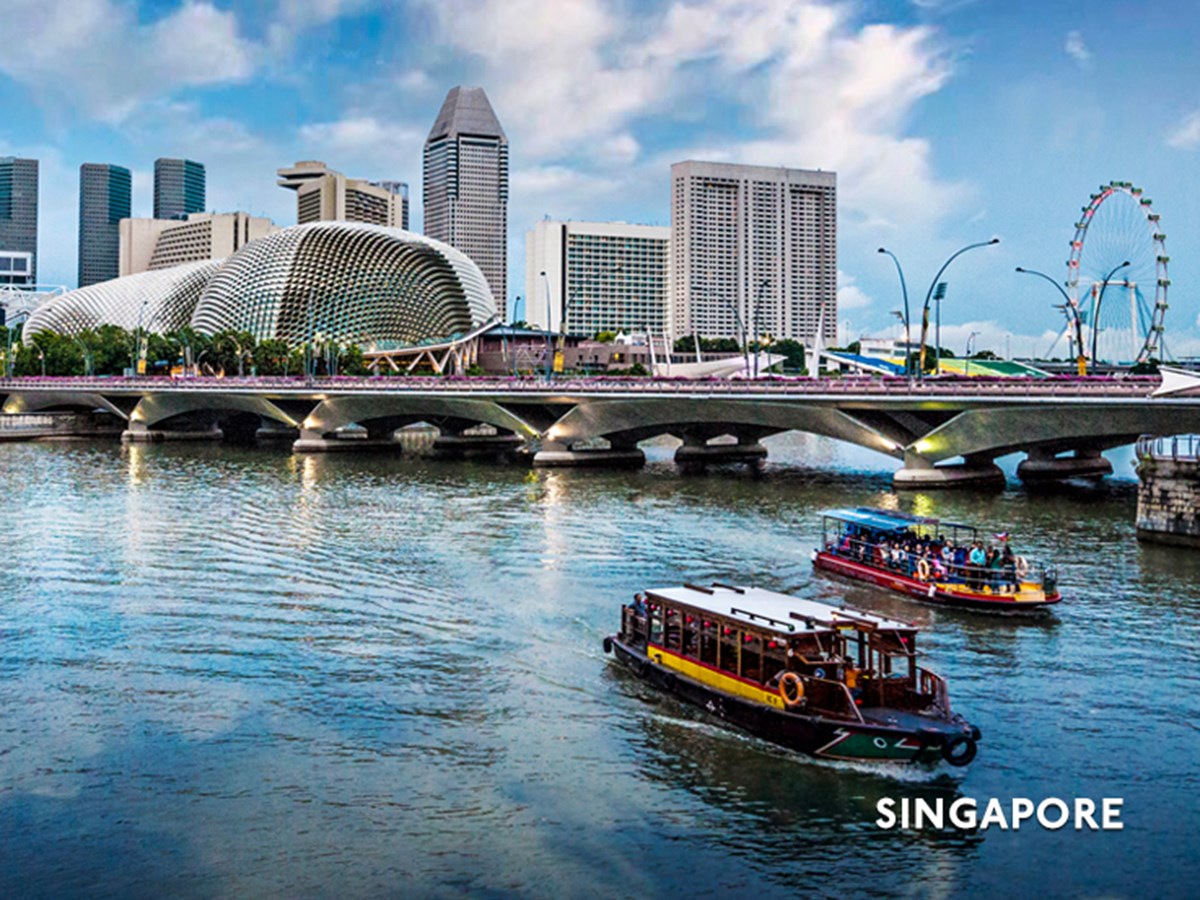
Covid-19: MOM updates advisory on requirements for safe management measures at the workplace to allow greater flexibility for businesses

On 24 March 2021, the Ministry of Manpower (“MOM”) issued an updated advisory on “Requirements for Safe Management Measures at the Workplace” (“Advisory”) to allow greater flexibility for businesses while mitigating the risk of widespread Covid-19 transmission. The Advisory states that implementing these measures effectively will help avoid having to impose tighter measures.
The requirements in the Advisory will take effect from 5 April 2021 and are meant for general workplace settings. There may be sector-specific requirements for certain workplaces like construction worksites and shipyards, where additional requirements may apply. Further guidance on the Advisory is set out in the “Frequently Asked Questions on Safe Management Measures at the Workplace After Circuit Breaker Period” (“FAQs”).
The Advisory was first issued on 9 May 2020 by the Tripartite Partners, which comprises MOM, the National Trades Union Congress and the Singapore National Employers Federation.
Agencies including MOM, the Building and Construction Authority and Enterprise Singapore will continue to enforce and take action against errant employers. This may include issuing stop-work orders and financial penalties.
This article provides an overview of the safe management measures set out in the updated Advisory.
Take care of workers
Provide employees options to work from home
The Advisory provides that more employees may return to the workplace from 5 April 2021 to better support in-person collaboration and business operations. Nonetheless, employers are encouraged to support as many employees in working from home as possible.
- As the risk of transmission remains, employers must ensure that no more than 75% of employees who are able to work from home are at the workplace at any point in time. For example, a company with 100 employees who are able to work from home can have up to 75 employees at the workplace at any point in time. The Advisory further states that there is no limit on the proportion of an individual employee’s working time that can be spent at the workplace.
- Employers are encouraged to support as many employees in working from home as possible to limit the number of employees exposed at the workplace at any point in time, and reduce crowding in common areas such as pantries, toilets and lifts. Further, having more employees work from home will help sustain business operations should a case emerge at the workplace.
- Work-from-home measures enable employees to maintain work-life harmony while continuing to meet business needs. The Advisory make reference to the Tripartite advisory on mental well-being at workplaces which sets out practical guidance on measures that employers can adopt to support employees’ mental well-being.
For employees who are still unable to work from home, the Advisory continues to provide that employers should review work processes, provide the necessary IT equipment to employees and adopt solutions that enable remote working and online collaboration. Employers are encouraged to leverage technology to ensure business continuity and safe management.
Companies should continue to conduct virtual meetings as far as possible. In addition, companies should pay special attention to vulnerable employees (e.g. persons who are aged 60 and above, and patients who are immunocompromised or have concurrent medical conditions). Employers are encouraged to enable these employers to work from home, allow them to travel to/from work at off-peak timings, temporarily redeploy them to another role within the company, or take other appropriate measures to reduce their exposure to infection risk.
Measures to be implemented for employees at the workplace
For employees at the workplace, employers must ensure the following precautions are in place:
- Stagger start times and allow flexible workplace hours: This spreads out staff across time and place, and reduces possible congregation of employees at common spaces at or near the workplace, such as entrances, exits, lobbies, canteens and pantries. It also reduces congestion of people in public places, including public transport.
With more employees back in the office, employers are encouraged to stagger the start times for all employees such that at least half of all employees arrive at the workplace at or after 10am, as far as possible. If physical meetings are needed, they can be scheduled after 10am. These measures would enable more employees to avoid peak-hour travel, especially if they require the use of public transport. Timings of lunch and other breaks should also be staggered accordingly. Employers should also allow for flexible workplace hours for employees who can work from home but who return to the workplace. This is not to shorten work hours, but to allow flexibility to reduce the duration spent in the workplace while also working from home during the day. By way of illustration, employers could allow a proportion of their employees to work in the workplace from 10am to 4pm while fulfilling their remaining work hours from home. Employers could also allow their employees to work from home in the morning, and only return to the workplace in the afternoon, e.g. from 1pm to 5pm; or return to the workplace only for meetings and work from home the rest of the day.
If it is not feasible to implement staggered start times, flexible workplace hours, and staggered break hours due to operational reasons (e.g. manufacturing production line activities), employers must implement other systemic arrangements to reduce congregation of employees at common spaces.
- No cross-deployment across worksites: No employee should work at more than one worksite. If cross-deployment cannot be avoided (e.g. due to the nature of the job), additional safeguards must be taken to minimise the risk of cross infection.
- Requirements for work-related events at the workplace: All work-related events that proceed at the workplace must adhere to prevailing workplace safe management measures and are subjected to the following requirements:
- The number of persons per event must be capped at 50 persons to limit the risk of exposure to infection.
- Attendees must maintain at least one metre safe distancing between individual attendees, in accordance with the requirement at the workplace.
- Meals should not be the main feature of the event. Employers should avoid holding events over mealtimes as far as possible. Food or drinks should only be served if incidental to the workplace event (e.g. the meeting or conference extends over lunchtime). Further, the food must be served individually with the participants seated while consuming. Participants should minimise the time that they are unmasked while eating.
Work-related events at third-party venues will also be subject to any additional premise owners’ safe management policies.
Limit social gatherings to eight persons
The total gathering size must not exceed eight persons. Gatherings involving more than a single group of eight are not allowed. All social and recreational gatherings such as farewell lunches and team bonding activities within or outside the workplace must adhere to the prevailing gathering size limit of eight persons.
Wear masks at the workplace
Employers must ensure that all onsite personnel, including employees, visitors, suppliers and contractors, wear a mask and other necessary personal protective equipment at all times at the workplace, except during activities that require masks to be removed. Masks will have to be worn immediately after the activity is completed.
Employers should ensure that they have sufficient masks for all employees, including any need to replace masks more frequently due to workplace conditions. Where possible, employers should consider improving the working environment for employees to enable them to sustain wearing the masks.
The FAQs state that if an individual is alone in his or her own office with the door closed, and no other person enters the room, the individual may remove his or her mask in the room. If the room door is opened or if there is any contact with people, a mask must be used.
Observe good personal hygiene
Employers should encourage their employees to observe good personal hygiene, e.g. wash their hands regularly and refrain from touching their face.
Take care of the workplace
The following stipulations set out in the previous version of the Advisory relating to taking care of the workplace continue to apply:
- control access at the workplace;
- take precautions to ensure clear physical spacing of at least one metre;
- ensuring that employees adhere to the Ministry of Health’s prevailing travel advisory;
- requiring the suppliers and contractors of employers who are service buyers to implement similar safe distancing measures;
- minimising the need for physical touchpoints;
- stepping up cleaning of workplace premises; and
- providing cleaning and disinfecting agents at certain areas.
Take care of workers who become unwell at the workplace
The measures set out in the previous version of the Advisory relating to taking care of workers who become unwell at the workplace continue to apply. These include:
- ensuring regular checks for temperature and respiratory symptoms for all onsite employees and visitors;
- encouraging employees to download and activate the TraceTogether app;
- actively monitoring unwell employees and guarding against incipient outbreaks; and
- measures relating to managing unwell and confirmed cases.
Implement a system of safe management measures
The measures set out in the previous version of the Advisory relating to the implementation of safe management measures also continue to apply. These measures include:
- implementing a detailed monitoring plan to ensure compliance with safe management measures and timely resolution of outstanding issues; and
- appointing safe management officer(s) to assist in the implementation, coordination and monitoring of the system of safe management measures at the workplace.
Reference materials
The following materials are available on the MOM website www.mom.gov.sg:
- Requirements for Safe Management Measures at the Workplace
- Annex A - Resources to assist companies
- Annex B - Checklist of safe management measures at the workplace for resumption of business activities
- Frequently Asked Questions on Safe Management Measures at the Workplace After Circuit Breaker Period
Further information
Allen & Gledhill has a Covid-19 Resource Centre on our website www.allenandgledhill.com that contains knowhow and materials on legal and regulatory aspects of the Covid-19 crisis.
In addition, we have a cross-disciplinary Covid-19 Legal Task Force consisting of Partners across various practice areas to provide rapid assistance. Should you have any queries, please do not hesitate to get in touch with us at covid19taskforce@allenandgledhill.com.

